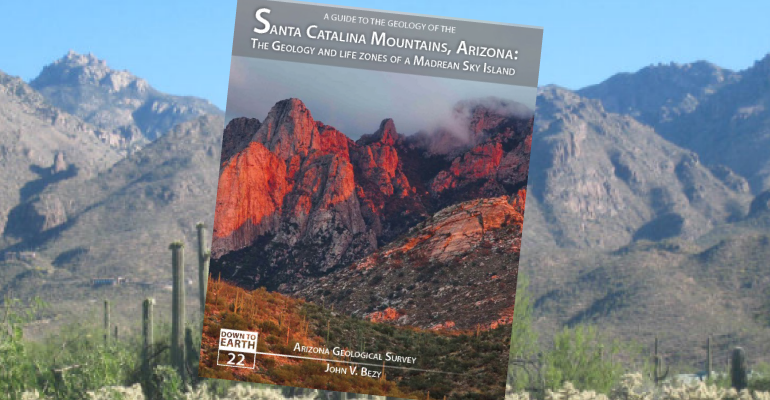
The Arizona Geological Survey (AZGS) has just released a new publication that is available for free download here: http://repository.azgs.az.gov/uri_gin/azgs/dlio/1679
The paper citation is: “Bezy, J.V., 2016, A Guide to the Geology of the Santa Catalina Mountains, Arizona: The Geology and Life Zones of a Madrean Sky Island. Arizona Geological Survey Down-to-Earth # 22, 83 p
The description from AZGS:
This is a non-technical treatment of the geology and ecology of the Santa Catalina Mountains, Tucson, Arizona. Natural landscapes have distinctive personalities. Each is the product of the interplay of geology, climate, vegetation, time, and often, human activities. The landscapes that form the Santa Catalina Mountains of southeastern Arizona give that range a unique personality like no other in the American Southwest. Rising as a great mountain island to over 9000 feet in elevation at their summit, Mount Lemmon, the Santa Catalina Mountains are the greatest expanse of high country within the Sonoran Desert. An unusual dome-like profile sets it apart from the numerous, steep, sharp-crested mountain ranges in the region. This distinctive profile is a legacy of the range’s remarkable geologic history and the structure of its bedrock. Formed miles deep within Earth’s crust before being exhumed, this ancient structure has guided surface weathering and erosion for millions of years. The result is a mosaic of mountain landscapes of singular beauty and complexity.
This publication contains some 83 spectacular photos and figures. It gives a very good introduction to the geology and geological processes that formed the range and also describes its life zones.
The rocks in the Santa Catalina Mountains record 1.65 billion years of history. The publication is written for both the general public and geologists. Take a look and gain an appreciation of that history for when you travel the mountains.
Note to readers: I have constructed a linked index to more than 300 of my ADI articles. You can see it at: https://wryheat.wordpress.com/adi-index/
You can read my comprehensive, 28-page essay on climate change here: http://wp.me/P3SUNp-1bq
